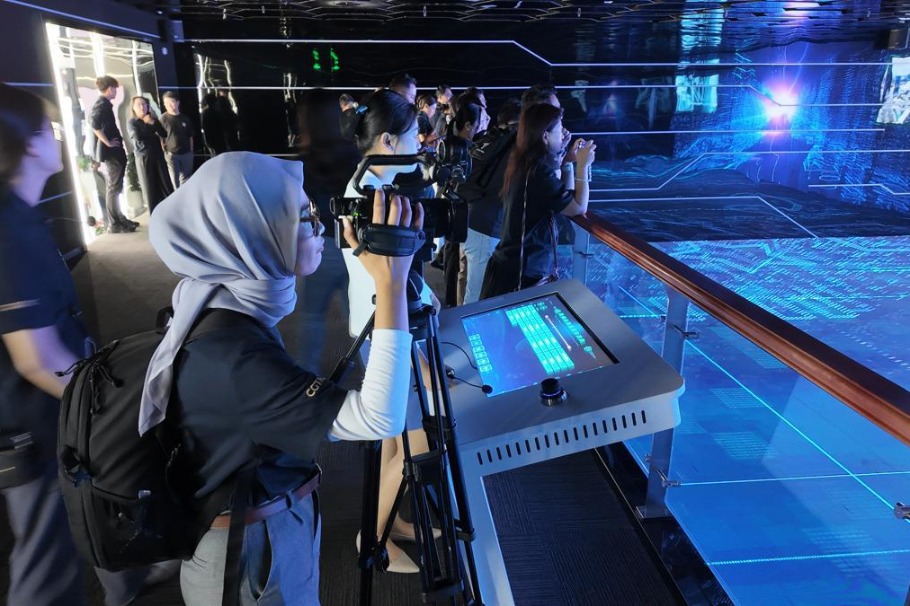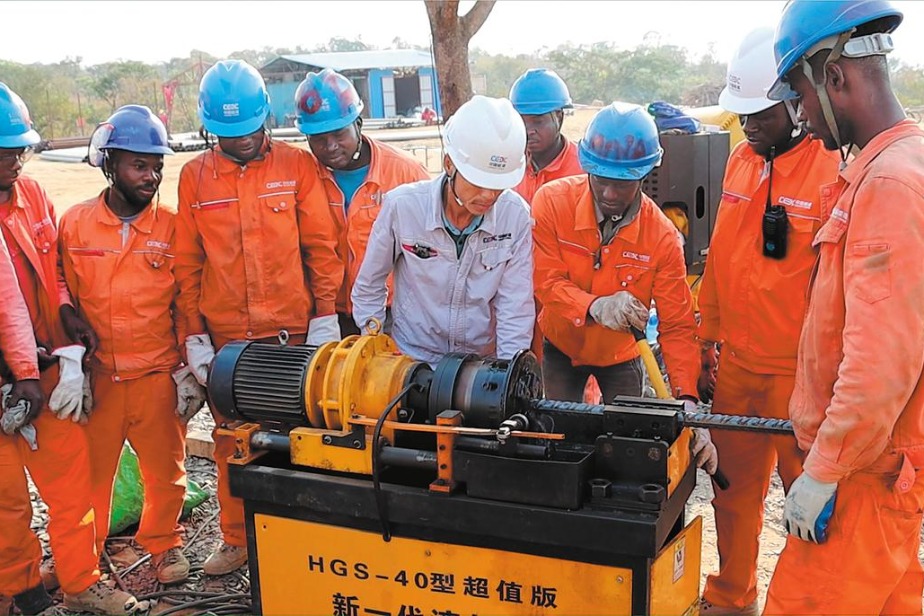Chang'e 6 probe data reveal water distribution on Moon

BEIJING -- For the first time, an international team of researchers has revealed the abundance and distribution of water on and beneath the Moon's surface, using data collected by China's Chang'e 6 lunar probe.
The study published in the journal Nature Astronomy highlighted the critical roles of solar wind and impact-driven gardening in the formation and evolution of lunar surface water.
The researchers from the Chinese Academy of Sciences, together with collaborators from the University of Hawaii, analyzed in-situ data from the Chang'e 6 landing site. They found that areas disturbed by plumes display distinct temperature and water-content patterns, driven by the redistribution of fine regolith.
Lander plumes, which displace and expose millimeter to centimeter-sized regolith during descent, offer a rare opportunity to study subsurface water.
The average water content of the exposed fine regolith of the shallow subsurface is approximately 76 ppm, which is lower than the surface abundance of about 105 ppm measured at the surface, according to the study.
Additionally, the Chang'e 6 landing site contains, on average, approximately twice the water content of the Chang'e 5 site.
The Chang'e 6 mission in 2024 accomplished humanity's first-ever sampling from the South Pole-Aitken Basin on the far side of the Moon. The Chang'e 5 probe landed in 2020 on the northwest region of the Ocean of Storms.
The team found that the water content at the same location varies with local time, reaching a minimum at local noon.
They suggest that the differences in water content are correlated with the regolith glass abundance, particle sizes, depths and local times, reinforcing the hypothesis that solar wind implantation and impact gardening govern lunar water formation and distribution.
These findings indicate that the fine-grained regolith on and just below the lunar surface could be a prime target for future exploitation of lunar water resources.
The Chang'e 8 mission, scheduled for launch around 2029, will target the Leibnitz-Beta Plateau near the lunar south pole region. Working alongside the earlier Chang'e 7 mission, expected in 2026, it will carry out scientific exploration and in-situ resource utilization experiments, laying the groundwork for a future International Lunar Research Station.
China initiated the International Lunar Research Station, a scientific experimental facility consisting of sections on the lunar surface and in lunar orbit. It is projected to be built in two phases: a basic model to be built by 2035 in the lunar south pole region, and an extended model to be built in the 2040s.
- Chang'e 6 probe data reveal water distribution on Moon
- Chinese mainland mourns loss of lives due to typhoon in Taiwan
- China makes progress in ensuring gender equality in education
- Behold the world's tallest bridge
- Xizang celebrates Farmers' Harvest Festival with events
- Beijing forum explores AI's role in cultural sector





































